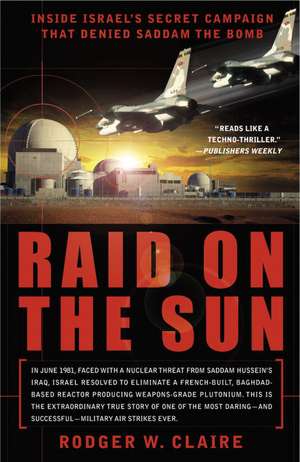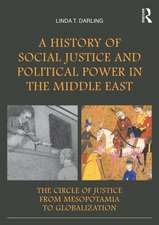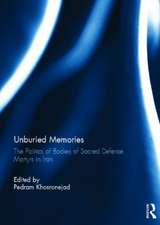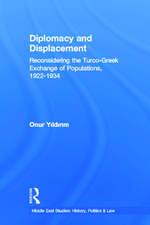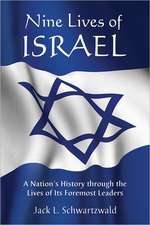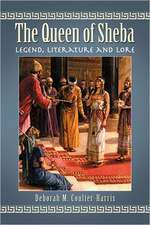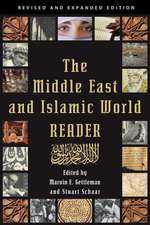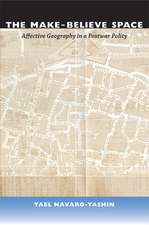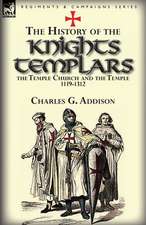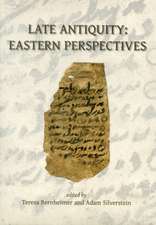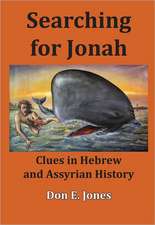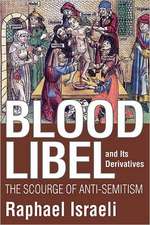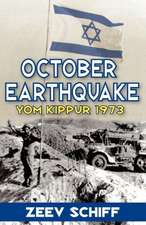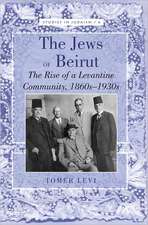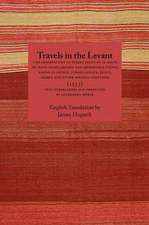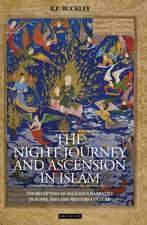Raid on the Sun: Inside Israel's Secret Campaign That Denied Saddam the Bomb
Autor Rodger William Claireen Limba Engleză Paperback – 28 feb 2005
From the earliest days of his dictatorship, Saddam Hussein had vowed to destroy Israel. So when France sold Iraq a top-of-the-line nuclear reactor in 1975, the Israelis were justifiably concerned—especially when they discovered that Iraqi scientists had already formulated a secret program to extract weapons-grade plutonium from the reactor, a first critical step in creating an atomic bomb. The reactor formed the heart of a huge nuclear plant situated twelve miles from Baghdad, 1,100 kilometers from Tel Aviv. By 1981, the reactor was on the verge of becoming “hot,” and Israeli Prime Minister Menachem Begin knew he would have to confront its deadly potential. He turned to Israeli Air Force commander General David Ivry to secretly plan a daring surgical strike on the reactor—a never-before-contemplated mission that would prove to be one of the most remarkable military operations of all time.
Written with the full and exclusive cooperation of the Israeli Air Force high command, General Ivry (ret.), and all of the eight mission pilots (including Ilan Ramon, who become Israel’s first astronaut and perished tragically in the shuttle Columbia disaster), Raid on the Sun tells the extraordinary story of how Israel plotted the unthinkable: defying its U.S. and European allies to eliminate Iraq’s nuclear threat. In the tradition of Black Hawk Down, journalist Rodger Claire re-creates a gripping tale of personal sacrifice and survival, of young pilots who trained in the United States on the then-new, radically sophisticated F-16 fighter bombers, then faced a nearly insurmountable challenge: how to fly the 1,000-plus-kilometer mission to Baghdad and back on one tank of fuel. He recounts Israeli intelligence’s incredible “black ops” to sabotage construction on the French reactor and eliminate Iraqi nuclear scientists, and he gives the reader a pilot’s-eye view of the action on June 7, 1981, when the planes roared off a runway on the Sinai Peninsula for the first successful destruction of a nuclear reactor in history.
Preț: 109.54 lei
Nou
Puncte Express: 164
Preț estimativ în valută:
20.96€ • 21.80$ • 17.31£
20.96€ • 21.80$ • 17.31£
Carte disponibilă
Livrare economică 22 martie-05 aprilie
Preluare comenzi: 021 569.72.76
Specificații
ISBN-13: 9780767914253
ISBN-10: 0767914252
Pagini: 288
Dimensiuni: 201 x 132 x 15 mm
Greutate: 0.3 kg
Editura: BROADWAY BOOKS
ISBN-10: 0767914252
Pagini: 288
Dimensiuni: 201 x 132 x 15 mm
Greutate: 0.3 kg
Editura: BROADWAY BOOKS
Notă biografică
Rodger W. Claire, a former magazine editor, is the first journalist to have been granted complete access to all of the individuals involved in the raid on Osirak and to classified materials detailing it. The author of numerous articles and two screenplays, he lives in Los Angeles.
Extras
CHAPTER 1
TERROR OF THE TIGRIS
Prepare whatever resources and troops you must to terrorize the enemies of God.
--the qur'an
Before the birth of its First Citizen, the flat, dusty village of Al Auja, just south of Tikrit and a hundred miles north of nowhere in the Mesopotamian desert, was best known to historians as the site where the vicious fourteenth-century Tartar chieftain Tamerlane chose to erect his infamous pyramid of skulls, a towering obelisk of death fashioned from the decapitated heads of thousands of slaughtered Persian soldiers. In an ironically unconscious homage, Saddam Hussein, who didn't know Tamerlane from Timbuktu, would one day commission his own public sculpture in Baghdad featuring two gigantic arms bursting through the sand brandishing a pair of crossed scimitars that crowned a similar pyramid of skulls fashioned from the helmets of thousands of slaughtered twentieth-century Persian soldiers, known now in modern times as Iranians.
It was into this savagely unforgiving desert that young Saddam, whose name in Arabic means to "strike" or "punch," was thrust on April 28, 1937, fatherless and penniless, to be reared in a mud-and-straw house on the kiln-hot banks of the Tigris, without electricity, running water, or paved roads. Hussein would never forget his Tikriti roots. As though drawing inspiration from the land itself, he was mesmerized as a village boy by the country's ancient glory when it sat at the head of the Fertile Crescent, long before Abraham marched south from Ur in northern Mesopotamia to lay claim to the tribal homeland of the Semites. Much more than Iraq's later Islamic heritage, divided between the Sunni sects of the north and Shia of the south, Saddam identified with the country's pre-Arab Babylonian roots. He revered the great Babylonian king Nebuchadnezzar, whose golden age of prosperity had transformed ancient Baghdad into an intellectual center of trade and the arts, renowned throughout the Old World for such wonders as its legendary Hanging Gardens of Babylon. Even more impressive to young Saddam, Nebuchadnezzar was the last Middle Eastern ruler to conquer the Jews. Following a revolt in Palestine in 587 b.c., Nebuchadnezzar's army had destroyed Jerusalem, razing the First Temple and bringing an end to the kingdom of Judea. Thousands of Jews were marched in bondage back to Mesopotamia in what would become known in Talmudic history as the Babylonian captivity.
Hussein loved to recount the historic event to colleagues. And he would boast that someday he would follow in the footsteps of the legendary king to rule both the Middle East and Israel. Indeed, years later, after he had assumed regal-like powers, Hussein would embark on a Baghdad beautification program of public artworks, broad boulevards, and thousands of transplanted palm trees meant to evoke the great age of Nebuchadnezzar. Hussein named his sons Udai and Qusai, not names associated with Mohammed but with pre-Islamic Mesopotamia.
Maintaining fantastic dreams was especially important to young Saddam, who found his own reality nearly unbearable. Iraq was a tangled nation of tribes and clans and ethnic divisions. Where one was born and to what clan, or extended family, was extremely important, even in the poorer classes of Iraqi society. Surnames often derived from the village of one's clan. Most families could trace their forbears back for generations. Saddam's parents were not particularly distinguished members of either of their clans. Al Auja and Tikrit were considered backward, rural villages, and Tikritis of little account. Saddam's father's clan, the al-Majid, was considered lower caste.
Whether dead or just plain deadbeat--no one has ever seemed able to say for sure--Saddam's biological father left his son to be raised by his mother, Sabha, of the Tikriti Talfah clan, and a series of uncles, including one from his father's al-Majid clan named Ibrahim Hassan, who, regrettably, was better known to locals as "Hassan the Liar." (Tellingly, Saddam Hussein ultimately took his name from neither family--Talfah or Hassan.) Ibrahim eventually married Sabha and, with no trade and plenty of time, amused himself by beating young Saddam with a stick whenever he was bored, which, unfortunately for the boy, was often. He grew up mostly alone, forbidden to play with the other villagers, whom his uncle called "brigands," and who, in return, would taunt him for not having a "real" father. Saddam pined for the day he could escape Tikrit for a better world--a Mesopotamian world. In the meantime he bided his time, spending most days sitting by the side of the dirt road at the head of the village next to a fire pit with a red-hot poker, which he would stab into the stomachs of hapless village dogs that wandered by. This early cruel streak might have been occasion for worry, but on the sun-blasted streets of dirt-poor Tikrit it hardly went noticed.
Saddam finally caught a break when, in the fall of 1955, his mother's more prosperous brother, Khairallah Talfah, an ex-army officer turned hotheaded Arab nationalist and teacher, took Hussein along with his own son to Baghdad to attend secondary school. Saddam had just turned eighteen. Baghdad would change him forever.
In the early 1950s the city was a hotbed of ethnic and political radicalism. Iraq, which in Arabic means "the edge," was an amalgam of deeply divided tribes and ethnicities, the remnant of the defunct Ottoman Empire and Britain's Central Asian empire, which, following World War I, had been carved up into Iran and Iraq without taking into account traditionally and ethnically bound territories. Thus, most of southern Iraq, nearly 100 percent Shi'ite, had more in common with Iran than its Sunni "brothers" in the north. In fact, Iranian Shi'ites still revered two southern Iraqi cities as sacred religious shrines, including Najaf, the burial place of Mohammed's son-in-law, Al, (and the site of the horrendous terrorist bombing of its ancient mosque in August 2003). Meanwhile, distrustful of both the ruling Sunni and the southern Shi'ites were the northern Kurds, who were far closer in history and culture to the Kurdish tribes across the border in Turkey. By the 1950s Baghdad's tangle of ethnic divisions was further complicated by a slew of competing political parties, ranging from the Hashemite monarchists (the royal Arab family that ruled Jordan and whose scion, Prince Faisal, Britain had elected to rule Iraq in its stead), the right-wing Independence Party, and the centrist Liberal Party to the leftist People's Party, the Communist Party, and the secretive, socialist Arab nationalist Ba'th, or "Renaissance," Party.
Despite tutoring by his uncle, Saddam found it difficult to shed his peasant roots in the class-conscious big city, especially the crude accent that marked a rural Tikriti as unmistakably as a Cockney in St. James's Court. He failed to pass the entrance exam to join the prestigious Baghdad Military Academy. The stigma of outcast propelled Hussein, along with many of the city's disenchanted youth, toward the young, rebellious, socialist Ba'th Party. Founded in Damascus by two Syrian intellectuals in the early 1940s, the organization espoused vaguely pan-Arab nationalist and socialist principles similar to Egyptian president Gamal Nasser's Arab Legion. But the party's immediate attraction to Baghdad's frustrated young rebels was its intense hatred of Western colonialism, especially what it saw as its expansionist guerrilla state--Israel.
Hussein hagiographies would later attribute his party association to his newfound belief in Islamic nationalism. In truth, the impressionable peasant's son was greatly influenced by his uncle Khairallah, who having been jailed by the British for his part in Baghdad's short-lived pro-Mussolini revolt in 1941, was the closest thing Saddam had to a hero. Khairallah mentored him in the tradecraft of Iraqi politicians: manipulation, intrigue, and anti-Semitism. Not one for mincing words, Khairallah's collective wisdom would later be published for the benefit of future Ba'thi in his book Three Whom God Should Not Have Created: Persians, Jews, and Flies.
Hanging around political meetings and outdoor rallies, Saddam eventually caught the attention of Ba'thist officials, who spotted a use for the young man's brooding, sadistic personality. They soon put him in charge of recruiting schoolmates and organizing local street bullies into brownshirtlike gangs to intimidate shopkeepers and the suburban middle class. Saddam became a familiar figure at Ba'th street demonstrations and public beatings, where he would stand off to the side, ordering his thug warriors into the fray or pointing out local tradesmen to be beaten. Things changed radically on July 14, 1958, when Gen. Abdul Karim Qassem and his "Free Officers" Brigade, backed by the Ba'th Party, marched into Baghdad and overthrew King Faisal and the fading Hashemite monarchy. It was a remarkably vicious coup, even by Iraqi standards, the carnage sinking to a new nadir when wild-eyed, rampaging mobs--waving sticks and swords and rushing up and down alleys looking for people to punish--discovered the whereabouts of the body of the just-murdered prime minister Nuri al-Said. The crowd promptly dug up the corpse and dragged it through the streets of Baghdad on a rope. (The scene would ironically be reenacted, at least symbolically, forty-five years later when, at the end of the Iraq War, Baghdad mobs, unable to find the real, live Saddam, made do by pulling down the famed statue of their erstwhile leader and then dragging it through the streets at the end of a rope.) Indeed, Saddam watched this day from the sidelines, but the rising twenty-one-year-old politico could not help but learn a valuable lesson he would not soon forget about the true nature of power in Iraq--and the loss of it.
One year later Saddam found himself waiting on a darkening Baghdad street not far from the West German embassy. He shifted his weight from one foot to the other, awkwardly trying to conceal the submachine gun beneath his cloak. How far Hussein had advanced in the Ba'th Party was confirmed by his selection as part of the hit team to assassinate the repressive Prime Minister Qassem, who had fallen out of favor with the radical Ba'this. As Qassem's car pulled to the curb on the other side of the street, a deafening blast of machine gun fire mowed down everything in sight, bodyguards and hit men alike, throwing the scene into bedlam. In the ensuing confusion the prime minister's bodyguards, recovering from their initial shock, shoved Qassem into a passing taxi, which rushed him safely to the hospital.
As the official legend would later explain the apparent screw-up, Saddam, "when he found himself face to face with the dictator, was unable to restrain himself. He forgot all his instructions and opened fire." Saddam's job, in fact, was simply to provide cover for the hit men, who were to converge on the car from two sides and liquidate Qassem. Instead, Saddam panicked and opened fire on everyone, including fellow conspirator Abdul-Whahab al-Ghariri, who managed only two shots, one into Qassem's shoulder, before being dropped by Saddam's deadly fusillade. In the counterfire, Hussein was wounded in the leg and fled for his life, leaving behind al-Ghariri, who was quickly identified by Qassem's security team. Al-Ghariri's name led them to the rest of the team, and in short order Qassem's agents were hunting down one by one the surviving conspirators, including Saddam.
Again, according to the official Ba'thist story, Saddam, in pain and under sentence of death, dug the bullet out of his leg with a knife and, helped by kindly nomadic Bedouins and simple peasants, limped his way to Tikrit disguised as an Arab wanderer. In truth, a local doctor removed the bullet, and Saddam's uncle helped him cross the border by car into Syria and then finally to Cairo, where Ba'th Party loyalists took the young rebel in and enrolled him at the university.
For the next decade Hussein lived meagerly in a modest student tenement building not far from Cairo University, where he took up studying law. He was supported by a monthly government stipend granted by Egyptian president Gamal Nasser's regime, which had made Cairo a safe harbor and side station for revolutionaries and Arab nationalist dissidents from across the Middle East. For most of the next decade, Saddam lived cheaply and spent his time studying and working for the Ba'th Party. Occasionally, when the young Arab nationalist would run short of funds, the kindhearted bawab, or porter, of his building would loan him money. (Years later, after Saddam rose to power, he sent to Cairo for the old bawab and bestowed upon him a brand-new house as a reward for his earlier kindnesses.) The many dissident exiles in Cairo grew together to form a tight-knit community of idealists and revolutionaries. Sporting ethnic kaffiyehs and colorful regional dress from their various nations of exile, the foreign students, dissidents, and party chiefs gathered regularly in the capital's downtown caf*s and coffeehouses to argue politics and promote socialism and pan-Arab nationalism. Among the most strident of the Arab one-worlders was Saddam Hussein, who lobbied loudly and tirelessly for his Ba'th Party back in Iraq.
In 1968, the Iraqi Ba'th Party finalized secret plans to take over the Iraqi government. Saddam promptly left his law studies and returned to Iraq to help foment the revolution. Hussein worked his way up the ranks to become head of the Ba'th security brigade, whose function was to eliminate enemies and protect party leaders, among them Saddam's cousin, Ahmed Hassan al-Bakr, a former schoolteacher who had become head of the Iraqi Ba'th. Adapting his own version of the carrot and stick--tarhib and targhid ("terror" and "enticement")--Hussein formed friendships and alliances when they furthered his career and broke them when they did not. He displayed a gift for understanding human nature at its most basic level and grasped early on that physical punishment was a great motivator, but fear of physical punishment was even greater. He found he had only to make one or two particularly dramatic examples and a reputation for his ruthlessness and retribution would grow by itself--the myth, in fact, far outstripping the reality. Years later, after he had become a complete tyrant, Hussein arrested a general, Omar al-Hazzaa, who had been heard to speak badly about him. He did not just sentence al-Hazzaa to death. Saddam first had al-Hazzaa's tongue cut out and then had his son executed as well. His home was bulldozed flat and his wife and surviving children turned out on the street. Such horrors, Hussein found, were a much greater deterrent than simply planting the general in the ground.
The macabre, almost routine cycle of bloodbaths in Baghdad finally came to an end at three o'clock in the morning, July 17, 1968, when the Ba'thists stormed the presidential palace and ousted Qassem, and al-Bakr, the new prime minister and commander in chief, proclaimed the Age of Revolution.
It would be another year before Saddam would emerge from the shadows behind the al-Bakr throne. Then it was revealed that Saddam was second in command to his uncle, vice president of the secretive, all-powerful Revolutionary Command Council--and had been since the earliest days of the regime.
From the Hardcover edition.
TERROR OF THE TIGRIS
Prepare whatever resources and troops you must to terrorize the enemies of God.
--the qur'an
Before the birth of its First Citizen, the flat, dusty village of Al Auja, just south of Tikrit and a hundred miles north of nowhere in the Mesopotamian desert, was best known to historians as the site where the vicious fourteenth-century Tartar chieftain Tamerlane chose to erect his infamous pyramid of skulls, a towering obelisk of death fashioned from the decapitated heads of thousands of slaughtered Persian soldiers. In an ironically unconscious homage, Saddam Hussein, who didn't know Tamerlane from Timbuktu, would one day commission his own public sculpture in Baghdad featuring two gigantic arms bursting through the sand brandishing a pair of crossed scimitars that crowned a similar pyramid of skulls fashioned from the helmets of thousands of slaughtered twentieth-century Persian soldiers, known now in modern times as Iranians.
It was into this savagely unforgiving desert that young Saddam, whose name in Arabic means to "strike" or "punch," was thrust on April 28, 1937, fatherless and penniless, to be reared in a mud-and-straw house on the kiln-hot banks of the Tigris, without electricity, running water, or paved roads. Hussein would never forget his Tikriti roots. As though drawing inspiration from the land itself, he was mesmerized as a village boy by the country's ancient glory when it sat at the head of the Fertile Crescent, long before Abraham marched south from Ur in northern Mesopotamia to lay claim to the tribal homeland of the Semites. Much more than Iraq's later Islamic heritage, divided between the Sunni sects of the north and Shia of the south, Saddam identified with the country's pre-Arab Babylonian roots. He revered the great Babylonian king Nebuchadnezzar, whose golden age of prosperity had transformed ancient Baghdad into an intellectual center of trade and the arts, renowned throughout the Old World for such wonders as its legendary Hanging Gardens of Babylon. Even more impressive to young Saddam, Nebuchadnezzar was the last Middle Eastern ruler to conquer the Jews. Following a revolt in Palestine in 587 b.c., Nebuchadnezzar's army had destroyed Jerusalem, razing the First Temple and bringing an end to the kingdom of Judea. Thousands of Jews were marched in bondage back to Mesopotamia in what would become known in Talmudic history as the Babylonian captivity.
Hussein loved to recount the historic event to colleagues. And he would boast that someday he would follow in the footsteps of the legendary king to rule both the Middle East and Israel. Indeed, years later, after he had assumed regal-like powers, Hussein would embark on a Baghdad beautification program of public artworks, broad boulevards, and thousands of transplanted palm trees meant to evoke the great age of Nebuchadnezzar. Hussein named his sons Udai and Qusai, not names associated with Mohammed but with pre-Islamic Mesopotamia.
Maintaining fantastic dreams was especially important to young Saddam, who found his own reality nearly unbearable. Iraq was a tangled nation of tribes and clans and ethnic divisions. Where one was born and to what clan, or extended family, was extremely important, even in the poorer classes of Iraqi society. Surnames often derived from the village of one's clan. Most families could trace their forbears back for generations. Saddam's parents were not particularly distinguished members of either of their clans. Al Auja and Tikrit were considered backward, rural villages, and Tikritis of little account. Saddam's father's clan, the al-Majid, was considered lower caste.
Whether dead or just plain deadbeat--no one has ever seemed able to say for sure--Saddam's biological father left his son to be raised by his mother, Sabha, of the Tikriti Talfah clan, and a series of uncles, including one from his father's al-Majid clan named Ibrahim Hassan, who, regrettably, was better known to locals as "Hassan the Liar." (Tellingly, Saddam Hussein ultimately took his name from neither family--Talfah or Hassan.) Ibrahim eventually married Sabha and, with no trade and plenty of time, amused himself by beating young Saddam with a stick whenever he was bored, which, unfortunately for the boy, was often. He grew up mostly alone, forbidden to play with the other villagers, whom his uncle called "brigands," and who, in return, would taunt him for not having a "real" father. Saddam pined for the day he could escape Tikrit for a better world--a Mesopotamian world. In the meantime he bided his time, spending most days sitting by the side of the dirt road at the head of the village next to a fire pit with a red-hot poker, which he would stab into the stomachs of hapless village dogs that wandered by. This early cruel streak might have been occasion for worry, but on the sun-blasted streets of dirt-poor Tikrit it hardly went noticed.
Saddam finally caught a break when, in the fall of 1955, his mother's more prosperous brother, Khairallah Talfah, an ex-army officer turned hotheaded Arab nationalist and teacher, took Hussein along with his own son to Baghdad to attend secondary school. Saddam had just turned eighteen. Baghdad would change him forever.
In the early 1950s the city was a hotbed of ethnic and political radicalism. Iraq, which in Arabic means "the edge," was an amalgam of deeply divided tribes and ethnicities, the remnant of the defunct Ottoman Empire and Britain's Central Asian empire, which, following World War I, had been carved up into Iran and Iraq without taking into account traditionally and ethnically bound territories. Thus, most of southern Iraq, nearly 100 percent Shi'ite, had more in common with Iran than its Sunni "brothers" in the north. In fact, Iranian Shi'ites still revered two southern Iraqi cities as sacred religious shrines, including Najaf, the burial place of Mohammed's son-in-law, Al, (and the site of the horrendous terrorist bombing of its ancient mosque in August 2003). Meanwhile, distrustful of both the ruling Sunni and the southern Shi'ites were the northern Kurds, who were far closer in history and culture to the Kurdish tribes across the border in Turkey. By the 1950s Baghdad's tangle of ethnic divisions was further complicated by a slew of competing political parties, ranging from the Hashemite monarchists (the royal Arab family that ruled Jordan and whose scion, Prince Faisal, Britain had elected to rule Iraq in its stead), the right-wing Independence Party, and the centrist Liberal Party to the leftist People's Party, the Communist Party, and the secretive, socialist Arab nationalist Ba'th, or "Renaissance," Party.
Despite tutoring by his uncle, Saddam found it difficult to shed his peasant roots in the class-conscious big city, especially the crude accent that marked a rural Tikriti as unmistakably as a Cockney in St. James's Court. He failed to pass the entrance exam to join the prestigious Baghdad Military Academy. The stigma of outcast propelled Hussein, along with many of the city's disenchanted youth, toward the young, rebellious, socialist Ba'th Party. Founded in Damascus by two Syrian intellectuals in the early 1940s, the organization espoused vaguely pan-Arab nationalist and socialist principles similar to Egyptian president Gamal Nasser's Arab Legion. But the party's immediate attraction to Baghdad's frustrated young rebels was its intense hatred of Western colonialism, especially what it saw as its expansionist guerrilla state--Israel.
Hussein hagiographies would later attribute his party association to his newfound belief in Islamic nationalism. In truth, the impressionable peasant's son was greatly influenced by his uncle Khairallah, who having been jailed by the British for his part in Baghdad's short-lived pro-Mussolini revolt in 1941, was the closest thing Saddam had to a hero. Khairallah mentored him in the tradecraft of Iraqi politicians: manipulation, intrigue, and anti-Semitism. Not one for mincing words, Khairallah's collective wisdom would later be published for the benefit of future Ba'thi in his book Three Whom God Should Not Have Created: Persians, Jews, and Flies.
Hanging around political meetings and outdoor rallies, Saddam eventually caught the attention of Ba'thist officials, who spotted a use for the young man's brooding, sadistic personality. They soon put him in charge of recruiting schoolmates and organizing local street bullies into brownshirtlike gangs to intimidate shopkeepers and the suburban middle class. Saddam became a familiar figure at Ba'th street demonstrations and public beatings, where he would stand off to the side, ordering his thug warriors into the fray or pointing out local tradesmen to be beaten. Things changed radically on July 14, 1958, when Gen. Abdul Karim Qassem and his "Free Officers" Brigade, backed by the Ba'th Party, marched into Baghdad and overthrew King Faisal and the fading Hashemite monarchy. It was a remarkably vicious coup, even by Iraqi standards, the carnage sinking to a new nadir when wild-eyed, rampaging mobs--waving sticks and swords and rushing up and down alleys looking for people to punish--discovered the whereabouts of the body of the just-murdered prime minister Nuri al-Said. The crowd promptly dug up the corpse and dragged it through the streets of Baghdad on a rope. (The scene would ironically be reenacted, at least symbolically, forty-five years later when, at the end of the Iraq War, Baghdad mobs, unable to find the real, live Saddam, made do by pulling down the famed statue of their erstwhile leader and then dragging it through the streets at the end of a rope.) Indeed, Saddam watched this day from the sidelines, but the rising twenty-one-year-old politico could not help but learn a valuable lesson he would not soon forget about the true nature of power in Iraq--and the loss of it.
One year later Saddam found himself waiting on a darkening Baghdad street not far from the West German embassy. He shifted his weight from one foot to the other, awkwardly trying to conceal the submachine gun beneath his cloak. How far Hussein had advanced in the Ba'th Party was confirmed by his selection as part of the hit team to assassinate the repressive Prime Minister Qassem, who had fallen out of favor with the radical Ba'this. As Qassem's car pulled to the curb on the other side of the street, a deafening blast of machine gun fire mowed down everything in sight, bodyguards and hit men alike, throwing the scene into bedlam. In the ensuing confusion the prime minister's bodyguards, recovering from their initial shock, shoved Qassem into a passing taxi, which rushed him safely to the hospital.
As the official legend would later explain the apparent screw-up, Saddam, "when he found himself face to face with the dictator, was unable to restrain himself. He forgot all his instructions and opened fire." Saddam's job, in fact, was simply to provide cover for the hit men, who were to converge on the car from two sides and liquidate Qassem. Instead, Saddam panicked and opened fire on everyone, including fellow conspirator Abdul-Whahab al-Ghariri, who managed only two shots, one into Qassem's shoulder, before being dropped by Saddam's deadly fusillade. In the counterfire, Hussein was wounded in the leg and fled for his life, leaving behind al-Ghariri, who was quickly identified by Qassem's security team. Al-Ghariri's name led them to the rest of the team, and in short order Qassem's agents were hunting down one by one the surviving conspirators, including Saddam.
Again, according to the official Ba'thist story, Saddam, in pain and under sentence of death, dug the bullet out of his leg with a knife and, helped by kindly nomadic Bedouins and simple peasants, limped his way to Tikrit disguised as an Arab wanderer. In truth, a local doctor removed the bullet, and Saddam's uncle helped him cross the border by car into Syria and then finally to Cairo, where Ba'th Party loyalists took the young rebel in and enrolled him at the university.
For the next decade Hussein lived meagerly in a modest student tenement building not far from Cairo University, where he took up studying law. He was supported by a monthly government stipend granted by Egyptian president Gamal Nasser's regime, which had made Cairo a safe harbor and side station for revolutionaries and Arab nationalist dissidents from across the Middle East. For most of the next decade, Saddam lived cheaply and spent his time studying and working for the Ba'th Party. Occasionally, when the young Arab nationalist would run short of funds, the kindhearted bawab, or porter, of his building would loan him money. (Years later, after Saddam rose to power, he sent to Cairo for the old bawab and bestowed upon him a brand-new house as a reward for his earlier kindnesses.) The many dissident exiles in Cairo grew together to form a tight-knit community of idealists and revolutionaries. Sporting ethnic kaffiyehs and colorful regional dress from their various nations of exile, the foreign students, dissidents, and party chiefs gathered regularly in the capital's downtown caf*s and coffeehouses to argue politics and promote socialism and pan-Arab nationalism. Among the most strident of the Arab one-worlders was Saddam Hussein, who lobbied loudly and tirelessly for his Ba'th Party back in Iraq.
In 1968, the Iraqi Ba'th Party finalized secret plans to take over the Iraqi government. Saddam promptly left his law studies and returned to Iraq to help foment the revolution. Hussein worked his way up the ranks to become head of the Ba'th security brigade, whose function was to eliminate enemies and protect party leaders, among them Saddam's cousin, Ahmed Hassan al-Bakr, a former schoolteacher who had become head of the Iraqi Ba'th. Adapting his own version of the carrot and stick--tarhib and targhid ("terror" and "enticement")--Hussein formed friendships and alliances when they furthered his career and broke them when they did not. He displayed a gift for understanding human nature at its most basic level and grasped early on that physical punishment was a great motivator, but fear of physical punishment was even greater. He found he had only to make one or two particularly dramatic examples and a reputation for his ruthlessness and retribution would grow by itself--the myth, in fact, far outstripping the reality. Years later, after he had become a complete tyrant, Hussein arrested a general, Omar al-Hazzaa, who had been heard to speak badly about him. He did not just sentence al-Hazzaa to death. Saddam first had al-Hazzaa's tongue cut out and then had his son executed as well. His home was bulldozed flat and his wife and surviving children turned out on the street. Such horrors, Hussein found, were a much greater deterrent than simply planting the general in the ground.
The macabre, almost routine cycle of bloodbaths in Baghdad finally came to an end at three o'clock in the morning, July 17, 1968, when the Ba'thists stormed the presidential palace and ousted Qassem, and al-Bakr, the new prime minister and commander in chief, proclaimed the Age of Revolution.
It would be another year before Saddam would emerge from the shadows behind the al-Bakr throne. Then it was revealed that Saddam was second in command to his uncle, vice president of the secretive, all-powerful Revolutionary Command Council--and had been since the earliest days of the regime.
From the Hardcover edition.
Recenzii
Advance Praise for Raid on the Sun
“Rodger Claire handles a complex story with ease and assurance. Infused with an understanding of the pilots and their historical mission, RAID ON THE SUN illustrates how what they achieved for Israel was as vital as that earlier flight of the Enola Gay to Hiroshima to end World War Two. Claire has created a patient, scrupulous story that still unfolds with the pace and verve of a thriller. Don’t wait for the movie of the book. Buy it now.” —Gordon Thomas, author of Gideon’s Spies: Mossad’s Secret Warriors
“RAID ON THE SUN is an extraordinary look into the most secret, and perhaps the finest, air force on the planet. It is also a blistering indictment of the international arms industry that sell modern weapons to anyone with money. RAID ON THE SUN is required reading for everyone in the age of terror.” —Stephen Coonts, author of Flight of the Intruder
“A stunning eye-opener, shocking you with the realization of the enormous service the Israeli Air Force rendered the free world with its 1981 attack on Saddam Hussein’s nuclear facility. Claire went right to the source—the Israeli pilots who flew the mission—to tell in colorful detail the full story of this historic strike.” —Walter Boyne, author of Operation Iraqi Freedom: What Went Right, What Went Wrong and Why
“Rodger Claire handles a complex story with ease and assurance. Infused with an understanding of the pilots and their historical mission, RAID ON THE SUN illustrates how what they achieved for Israel was as vital as that earlier flight of the Enola Gay to Hiroshima to end World War Two. Claire has created a patient, scrupulous story that still unfolds with the pace and verve of a thriller. Don’t wait for the movie of the book. Buy it now.” —Gordon Thomas, author of Gideon’s Spies: Mossad’s Secret Warriors
“RAID ON THE SUN is an extraordinary look into the most secret, and perhaps the finest, air force on the planet. It is also a blistering indictment of the international arms industry that sell modern weapons to anyone with money. RAID ON THE SUN is required reading for everyone in the age of terror.” —Stephen Coonts, author of Flight of the Intruder
“A stunning eye-opener, shocking you with the realization of the enormous service the Israeli Air Force rendered the free world with its 1981 attack on Saddam Hussein’s nuclear facility. Claire went right to the source—the Israeli pilots who flew the mission—to tell in colorful detail the full story of this historic strike.” —Walter Boyne, author of Operation Iraqi Freedom: What Went Right, What Went Wrong and Why
